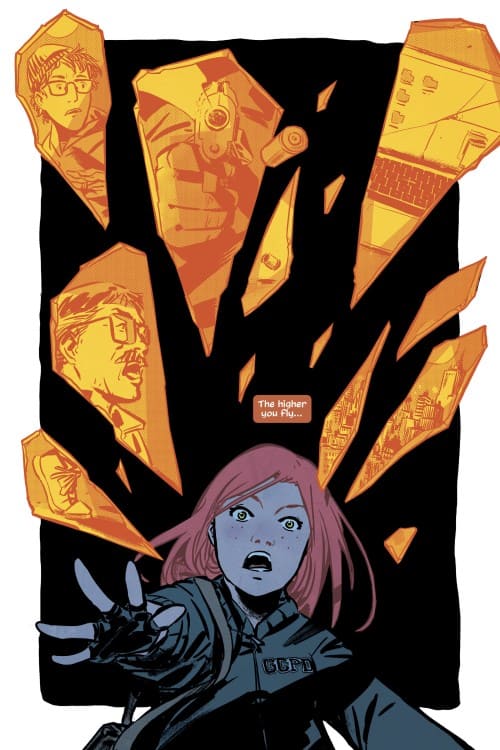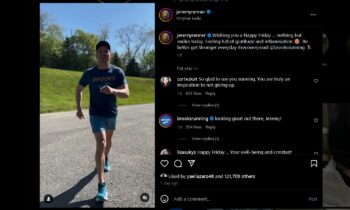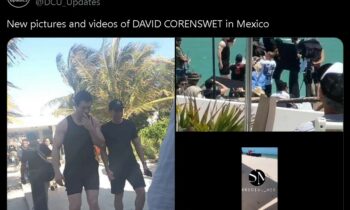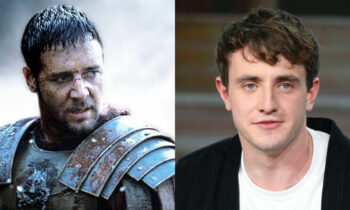Marieke Nijkamp Beautifully Redefines Barbara Gordon in The Oracle Code
In their effort to appeal to younger readers—especially teenage girls—DC started a new line of graphic novels under the imprint DC INK. The first of these, Teen Titans: Raven by Kami Garcia, was an excellent start. The newest one, The Oracle Code by Marieke Nijkamp and art from Manuel Preitano, is even better. Although it oddly doesn’t carry the Ink imprint, but DC Graphic Novels For Young Adults instead, it feels like it belongs in the same world as Raven. The only significant difference is that Oracle Code is much more grounded in reality.
Oracle Code is the Perfect DC Title for Marieke Nijkamp
 (Image: Oracle Code, by Marieke Nijkamp and art from Manuel Preitano, DC Comics)
(Image: Oracle Code, by Marieke Nijkamp and art from Manuel Preitano, DC Comics)
Before reading Oracle Code, I read another book by Marieke Nijkamp: This is Where it Ends. The novel is in “real-time,” focusing on four teenagers during a 55-minute school shooting. I’ve never read a young adult book that intense in my life, and that’s because Nijkamp doesn’t pull any punches. If you think she isn’t willing to go that extra word just to crush your spirits, she does. It has adult-level, terrifyingly real violence. But students face this reality every day, so not going to that level of realism condescends the audience.
But being able to tap into the authenticity of a situation isn’t her only strength. Barbara Gordon is one of the most famous disabled characters in comics, second only to Professor X and maybe Daredevil. Nijkamp also identifies as disabled. As far as I can tell (after three minutes of excruciating Google research), with Oracle Code, Nijkamp is the first disabled writer to tell a Barbara Gordon story. And telling this story was important to Nijkamp. As she said in an interview with WeNeedDiversityInBooks.Org:
The Oracle Code is an unapologetically disabled story. The vast majority of the cast of characters is disabled. It features wheelchair basketball and biped slalom. It’s a love letter to Barbara Gordon’s Oracle, the most important superhero in Gotham City. (Fight me.) It draws very heavily on my own experiences as a teen in a rehabilitation facility. It’s a story that doesn’t just explore disability but celebrates it too.
Oracle Code Gives Us a New Version of Barbara Gordon
 (Image: Oracle Code, by Marieke Nijkamp and art from Manuel Preitano, DC Comics)
(Image: Oracle Code, by Marieke Nijkamp and art from Manuel Preitano, DC Comics)
Throughout this entire graphic novel, there are two names you will never see: Joker and Batman. The story could be entirely removed from the DC superhero universe. We get things like a Robin doll, and we see kids reading Doom Patrol and wearing Robot-Man t-shirts. And there’s the great comic Dial C for Cats. But there are no superheroes or supervillains. Instead, the way Marieke Nijkamp handles Barbara’s handicap in Oracle Code is much more real. It’s a simple robber who shoots her as she tries to help someone. Not the Joker.
Oddly, this is the same approach Joker, the movie, took. It’s not set in a superhero world at all, but we still see these characters transform into their alter egos. Barbara Gordon is still Oracle. Only this time, Batgirl didn’t come first. This is significant. Oracle was always temporary, regardless of how long Barbara remained in the wheelchair in the comics. She was always Batgirl first, and would always be Batgirl again. And for the superhero world, that’s fine. Gail Simone explored the issue of Barbara getting her walking ability back wonderfully. But in Oracle Code, Marieke Nijkamp makes Oracle the only superhero identity Barbara needs. That is the kind of story we need.
Manuel Preitano’s art in Oracle Code is Perfect for Marieke Ninjkamp’s Story
 (Image: Oracle Code, by Marieke Nijkamp and art from Manuel Preitano, DC Comics)
(Image: Oracle Code, by Marieke Nijkamp and art from Manuel Preitano, DC Comics)
Barbara Gordon has never looked more natural to the story. Preitano’s art feels so natural to the story that it’s easy to forget that the artist and writer are different people. Oracle Code is a mystery, and the art reflects that. It’s murky in areas, abstract in others. The style is only completely “clean” in the very beginning and the very end. In between, he plays with lighting, and linework—and especially shadows. And now that Marieke Ninjkamp and Manuel Preitano established Barabra’s world in Oracle Code, it would be wonderful to see them take the characters further into that world. We have to see the kind of hero Oracle becomes.
Grade: A Good Pair of “Hacking Gloves”
(Featured Image: Oracle Code, by Marieke Nijkamp and art from Manuel Preitano, DC Comics)
Roman Colombo finished his MFA in 2010 and now teaches writing and graphic novel literature at various Philadelphia colleges. His first novel, Trading Saints for Sinners, was published in 2014. He's currently working on his next novel and hoping to find an agent soon.









Leave a comment